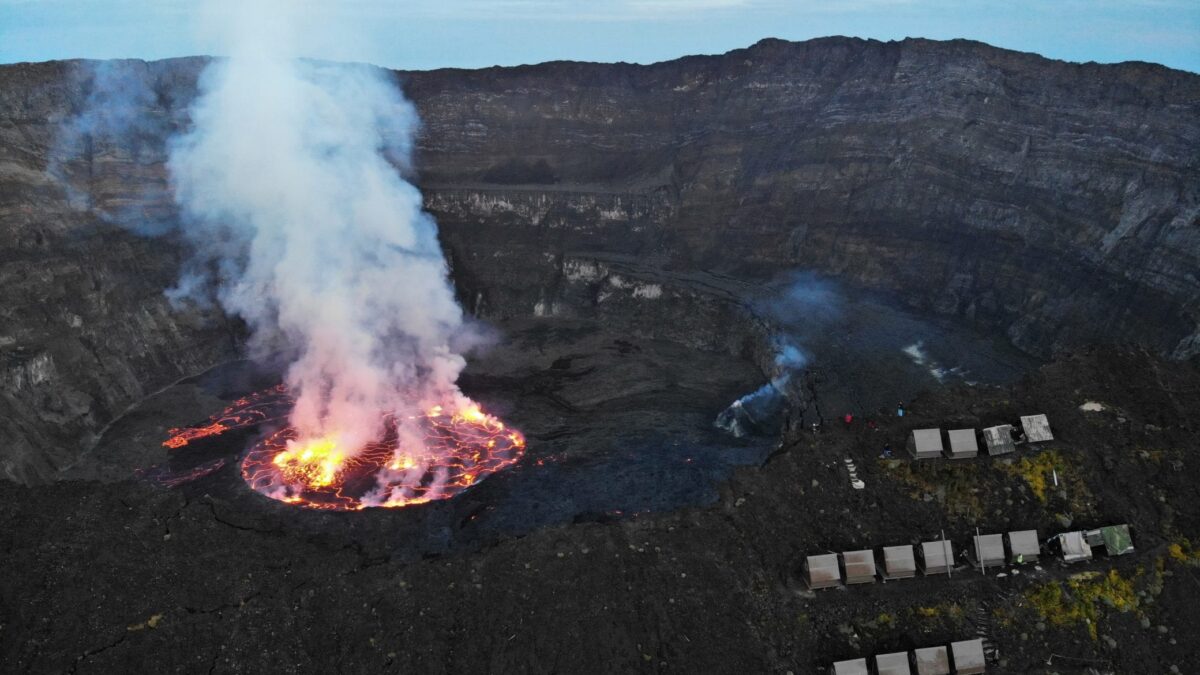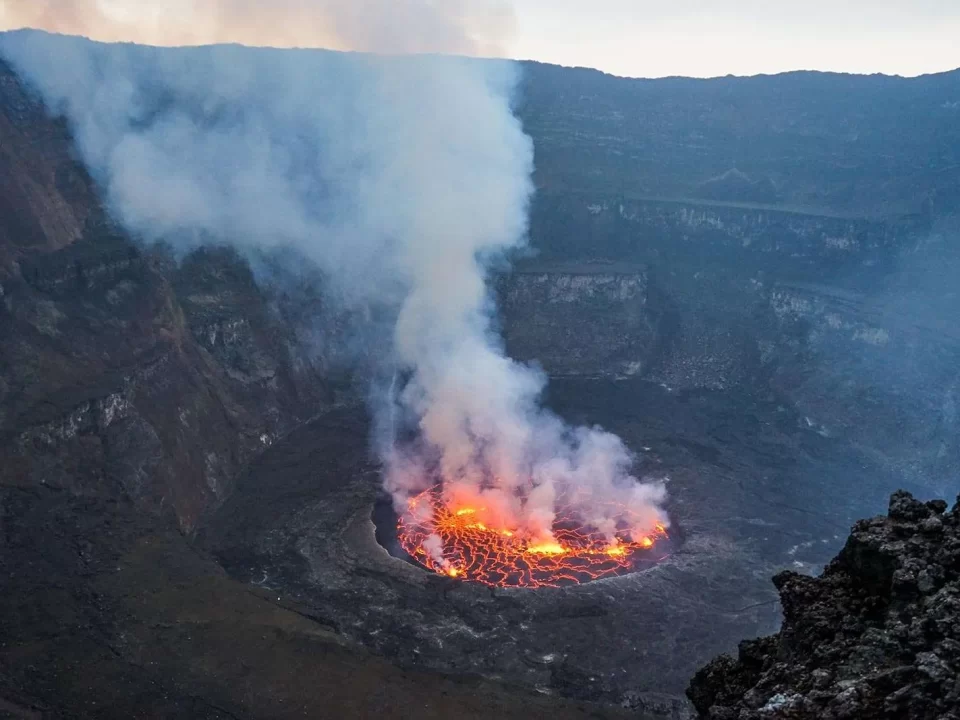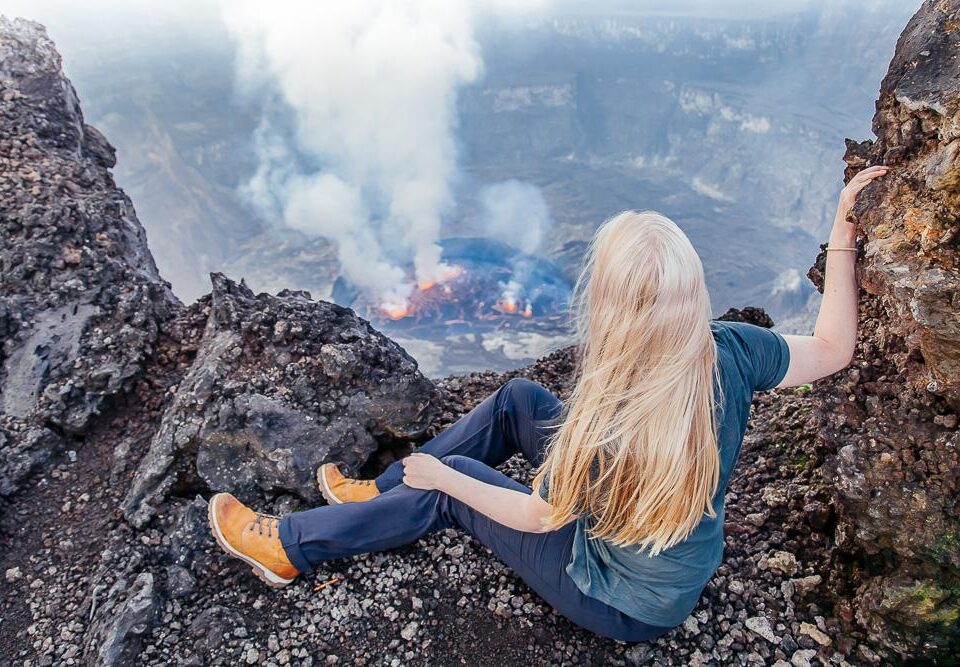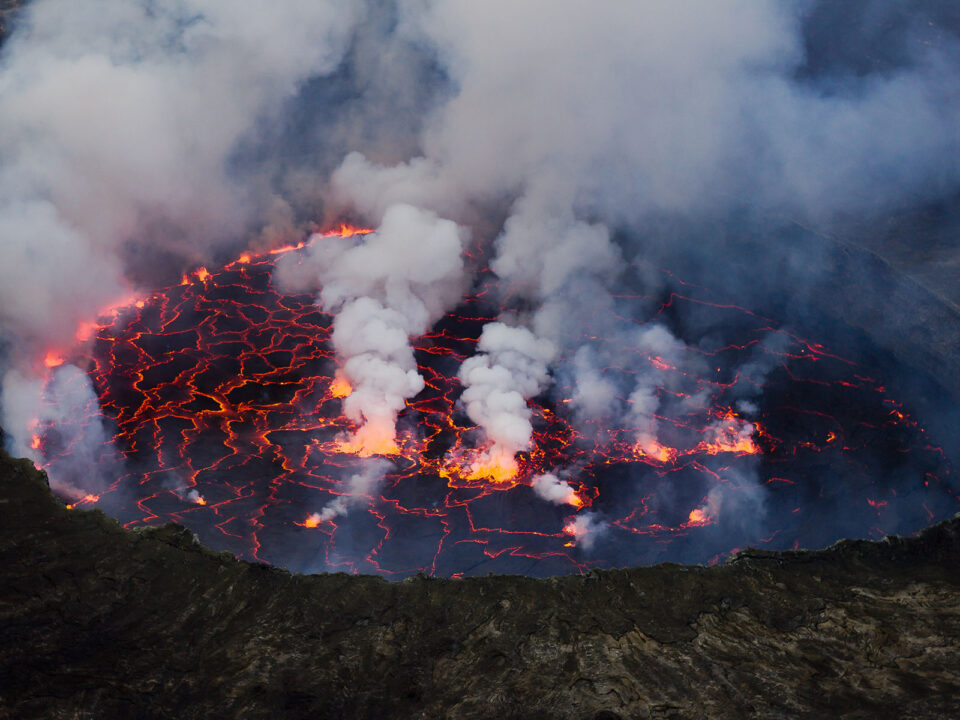What country is Mount Nyiragongo Volcano located in?

Mabamba Swamp in Uganda
January 11, 2024
Where to do Night Game Drives in Uganda?
January 11, 2024What country is Mount Nyiragongo volcano located in? – A Geological Marvel in the Democratic Republic of Congo
Curious minds often ponder, “What country is Mount Nyiragongo volcano located in?” The answer unfolds in the heart of East-Central Africa, within the Democratic Republic of Congo. Nestled in the Virunga Mountains, Mount Nyiragongo stands as an active volcano, captivating observers with its geological wonders and volatile history.
A Closer Look at Mount Nyiragongo’s Geographic Presence
Mount Nyiragongo dominates the Virunga National Park landscape, positioned near the border with Rwanda, approximately 12 miles north of Goma town in the Democratic Republic of Congo (Kinshasa). This imposing peak reaches an elevation of 11,385 feet (3,470 meters) and boasts a main crater with remarkable dimensions – 1.3 miles wide and 820 feet (250 meters) deep, harboring a liquid lava pool within its depths.
Historical Eruptions and Impact on the Region
The volcanic region of Virunga National Park has witnessed the destructive prowess of Mount Nyiragongo. In 1977, a devastating eruption claimed the lives of approximately 2,000 people, leaving a lasting mark on the local landscape. Another tragic chapter unfolded in 2002 when Goma town faced widespread destruction by lava, triggering a refugee crisis in its wake.
The Unique Features of Mount Nyiragongo’s Crater
Exploring the main crater of Mount Nyiragongo unveils a fascinating terrain. Stretching about 1 mile wide, the crater typically cradles a lava lake within its embrace. Remarkably, the crater exhibits two distinct lava benches, situated at approximately 3,175 meters (10,417 feet) and 2,975 meters (9,760 feet), respectively. Notably, Mount Nyiragongo’s lava lake has, at times, claimed the title of the most voluminous known lava lake in recent history.
Fluctuations in Lava Lake Depth
The depth of the lava lake undergoes significant variations, offering a dynamic aspect to Mount Nyiragongo’s volcanic activity. Recorded data indicates a maximum elevation of the lava lake at about 3,250 meters (10,660 feet) before the eruption in January 1977, with a corresponding lake depth of approximately 600 meters (2,000 feet). Following the eruption in January 2002, the lava lake reached a low point of about 2,600 meters (8,500 feet), marking a descent of 900 meters below the rim. Subsequent years witnessed a gradual rise in the lake level.
Mount Nyiragongo’s Impact on African Volcanic Activity
Mount Nyiragongo shares its volcanic legacy with nearby Nyamuragira, collectively responsible for a substantial 40% of Africa’s historical volcanic eruptions. The volcano’s cone intersects with two older counterparts, Baratu and Shaheru, while the surrounding landscape is dotted with numerous small volcanic cinder cones stemming from flank eruptions.
Geological Composition and Fluid Lava Flows
Nyiragongo’s geological composition is marked by pyroclastics and lava flows. The lavas exhibit a low-silica, alkali-rich, ultramafic nature, notably devoid of feldspars. Ranging from olivine-rich through leucites to nephelinites, these lavas predominantly consist of minerals such as nepheline, leucite, melilite, kalsilite, and clinopyroxene. This unique low-silica composition contributes to eruptions characterized by unusually fluid flows. Unlike slower-moving lava flows, Nyiragongo’s lava can race downhill at speeds reaching up to 100 km/h (60 mph), presenting a distinctive aspect of its volcanic activity.




